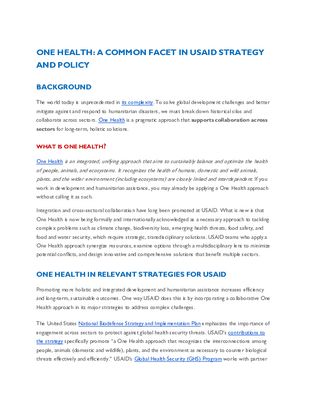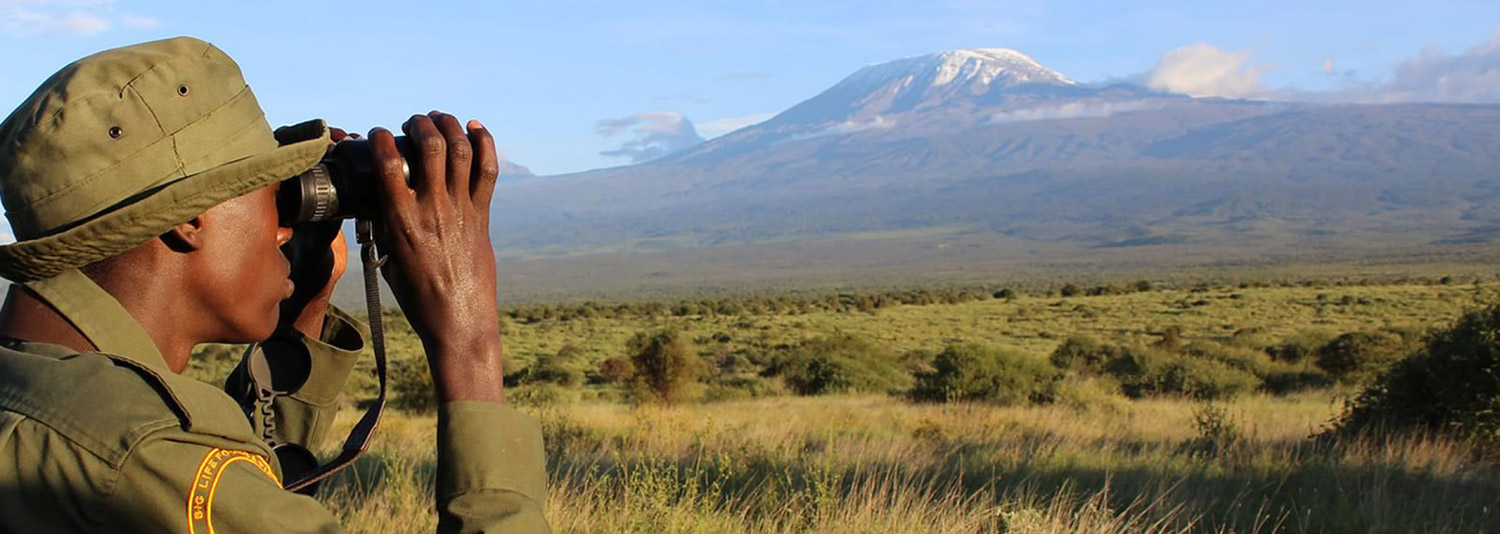One Health: A Common Facet in USAID Strategy and Policy

One Health is a pragmatic approach that helps tease apart the complexity and supports collaboration across sectors for long-term, holistic solutions. Learn more below or by downloading this file.
What is One Health?
One Health (OH) is an integrated, unifying approach that aims to sustainably balance and optimize the health of people, animals, and ecosystems. It recognizes the health of humans, domestic and wild animals, plants, and the wider environment (including ecosystems) are closely linked and interdependent.
One Health in Relevant Strategies for USAID
Promoting more holistic and integrated development and humanitarian assistance increases efficiency and long-term, sustainable outcomes. USAID is incorporating a collaborative OH approach in its major strategies to address complex challenges.
The National Biodefense Strategy and Implementation Plan emphasizes the importance of engagement across many sectors to bring about the vision of attaining a world safe and secure from global health threats posed by infectious disease. USAID’s contributions to the strategy specifically promote “a OH approach that recognizes the interconnections among people, animals (domestic and wildlife), plants, and the environment as necessary to counter biological threats effectively and efficiently.”
The USAID Climate Strategy (2022-2030) similarly encourages cross-sectoral collaboration that benefits the health of people and the planet by reducing risk of infectious disease, mitigating greenhouse gas emissions, and conserving ecosystems while also increasing food security and strengthening community resilience. The strategy states that “USAID is committed to addressing the interconnections among human, animal, and environmental health using a multisectoral OH approach.”
The Global Food Security Strategy (2022-2026) promotes OH principles through multi-sectoral collaborative partnerships and the adoption of climate-smart and sustainable agribusiness models that value and account for natural resources, health and nutrition outcomes, and social inclusion. The strategy explicitly states that USAID “will consider the interactions and potential cross-sectoral impacts across human, animal, and ecosystem health, which reduces exposure and controls emerging threats such as pests and disease.”
Other Strategies and Policies Aligning with One Health
Other pertinent strategies and policies for USAID capture the essence of OH through their collaborative and integrative nature even though they do not name OH specifically:
- The Global Water Strategy (2022-2027) supports a vision of building health, prosperity, stability, and resilience through sustainable and equitable water resource management.
- The USAID Multi-Sectoral Nutrition Strategy (2014-2025) fosters coordinated efforts from multiple sectors (agriculture, health, water, education, environment, economic growth, livelihoods, and social protection) across multiple platforms (public, private, and civil society) to improve and ensure effective nutrition-specific and nutrition-sensitive interventions.
- The USAID Biodiversity Policy (2014) emphasizes integrated and collaborative programming by emphasizing cross-sectoral engagement to improve understanding, collaboration and cohesion across bureaus and missions.
U.S. One Health Leadership
For more information about how other USG agencies are utilizing OH, please follow the links below:
- CDC's One Health Office
- USDA and One Health
- USGS One Health Approach
- FWS International Affairs and One Health



